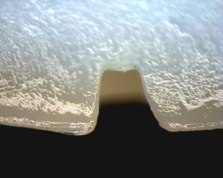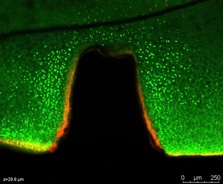Ultra-intense & Ultra-fast
laser-matter interaction
Ultra-intense & Ultra-fast
laser-matter interaction

Robin Marjoribanks Group


‘The most exciting phrase to hear in science, the one that heralds new discoveries, is not 'Eureka!' but 'That's funny...’
— Isaac Asimov











In our laser-surgery biophysics work, our program is to develop a new technical surgery platform: a 300fs burst-mode ultrafast fiber laser, a special FPGA ‘smart silicon’ controller which can be reconfigured in software alone, a hollow-core optical fiber delivery system, and a purpose-built arthroscope suitable for knee surgery, initially. This technology is only one part of the invention: this science has to be put together with new applications science -- we need to understand the biophysics of how to deliver less-invasive ultrafast laser surgery by arthroscopy.
This is an enormously exciting project that needs strong components of applied-physics foundations research, state-of-the-art fiber laser development, novel kinds of laser control, and ultrafast nonlinear optics research.
We're also pursuing a deeper understanding of the biophysics behind using intense ultrafast laser pulses for other surgical cutting, including corneal reshaping for vision correction, and debridement for heart surgery. In collaboration with Professor Margarete Akens (TECHNA Institute, and Department of Surgery), and Professor Lothar Lilge (Dept. Medical Biophysics, Univ. of Toronto) we've been studying the effects of ultrafast lasers on tissues, including the generation and propagation of shock waves, the limitation of histological insult to the surrounding tissue, and effects the laser may have on chromosomes. In this project, our industrial partners include FiberTech Optica (Kitchener, ON), and Axis Photonique Inc. (Varennes, QC).




White-light (top) and confocal microscope (bottom) images of porcine cartilage cut with burst-mode ultrafast laser pulses. Green stain shows viable cells, red stain labels necrotic cells. The range of tissue death is small -- an advantage for tissue grafting.

Last update : 2016 September
©RSMarjoribanks 2016